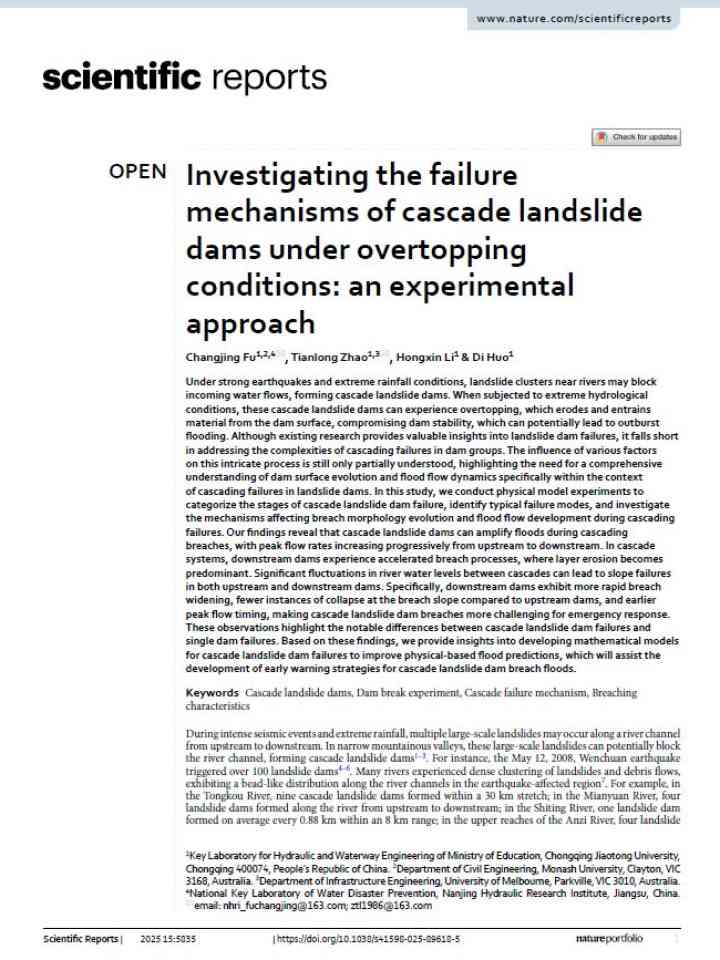Investigating the failure mechanisms of cascade landslide dams under overtopping conditions: an experimental approach
In this study, authors conduct physical model experiments to categorize the stages of cascade landslide dam failure, identify typical failure modes, and investigate the mechanisms affecting breach morphology evolution and flood flow development during cascading failures. The findings reveal that cascade landslide dams can amplify floods during cascading breaches, with peak flow rates increasing progressively from upstream to downstream. In cascade systems, downstream dams experience accelerated breach processes, where layer erosion becomes predominant. Significant fluctuations in river water levels between cascades can lead to slope failures in both upstream and downstream dams.
Specifically, downstream dams exhibit more rapid breach widening, fewer instances of collapse at the breach slope compared to upstream dams, and earlier peak flow timing, making cascade landslide dam breaches more challenging for emergency response. These observations highlight the notable differences between cascade landslide dam failures and single dam failures. Based on these findings, we provide insights into developing mathematical models for cascade landslide dam failures to improve physical-based flood predictions, which will assist the development of early warning strategies for cascade landslide dam breach floods.
Explore further
